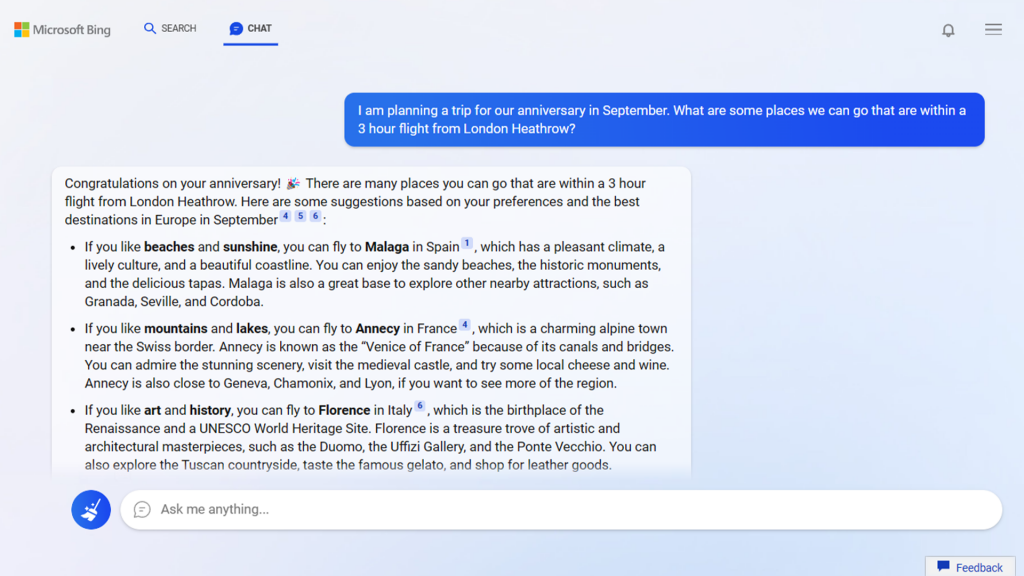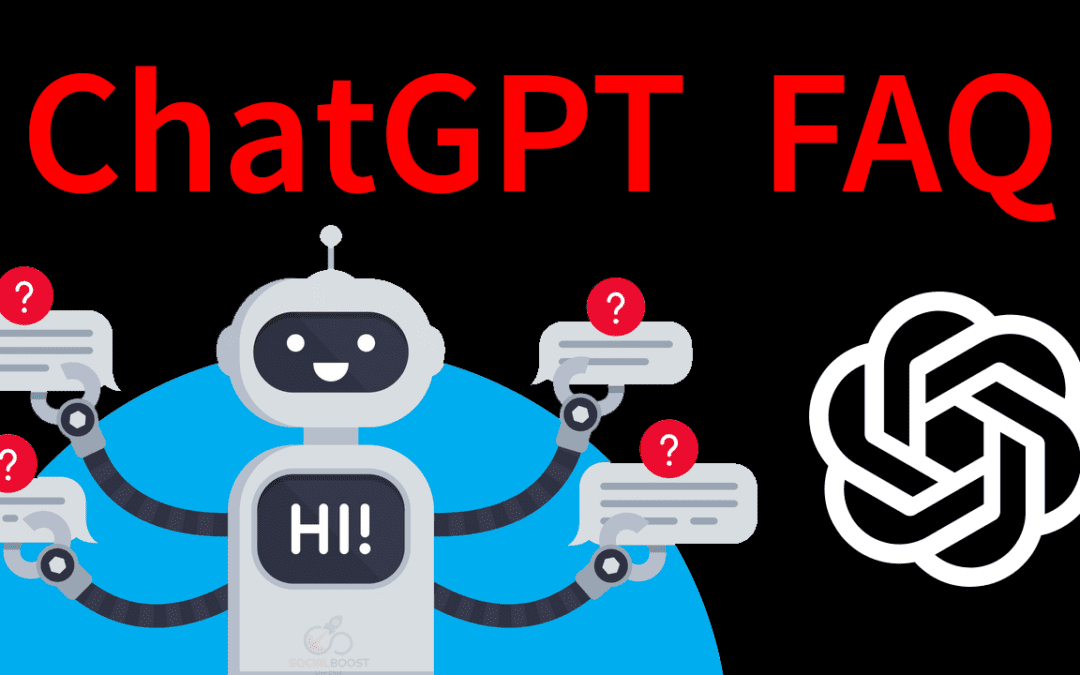What is ChatGPT?
In the simplest terms, ChatGPT is an interactive chatbot gone smart. Very smart.
Chatbots have been around for some time. You may be familiar with them from those pop-up customer service dialogue features on any number of websites you’ve used, such as when you’re checking your utility bill or buying something online. ChatGPT is similar, but much, much more sophisticated and “human-like”. It’s able to deliver answers and information on a bigger, broader level with a strikingly “real person” feel.
Chatbots like ChatGPT are powered by large amounts of data and computing techniques to make language predictions and string words together in a meaningful way. They not only tap into a vast amount of vocabulary and information, but also understand words in context. This helps them mimic speech patterns while dispatching an incredible level of knowledge.
ChatGPT doesn’t exactly know anything itself. It’s an Artificial Intelligence (AI) that’s trained to recognize patterns in the huge amounts of text and information available across the internet, analyze the data, then further trained to deliver more useful, more natural sounding dialog.
How popular has ChatGBT been so far?
ChatGBT is viral. It was launched in November 2022. By December 4, OpenAI estimated ChatGPT already had over one million users. In January 2023, ChatGPT reached over 100 million users. According to UBS, ChatGPT was averaging about 13 million visitors per day by the end of January.
UBS research states that ChatGPT is the “fastest-growing consumer application in history.”
What does the “GPT” stand for?
GPT stands for Generative Pre-training Transformer. It is a type of neural network structure often used for natural language processing tasks such as text generation.
Who created ChatGPT?
OpenAI is the San Francisco-based Artificial Intelligence (AI) development and research company behind ChatGPT.
It was formed in 2015 as a nonprofit research lab by a group of tech leaders including Sam Altman (the current CEO), PayPal co-founder Peter Thiel, LinkedIn co-founder Reid Hoffman, and Elon Musk. It formed a for-profit subsidiary in 2019 and struck a $1 billion deal with Microsoft. It has since grown to around 375 employees, not counting the contractors it pays to train and test its AI models around the world.
Today it is regarded as one of the world’s most ambitious artificial intelligence labs. In addition to ChatGPT and GPT-3, it’s responsible for the development of DALL-E 2, an AI system that lets you create digital images simply by describing what you want to see.

What is OpenAI’s mission?
From the start, OpenAI has characterized itself as a mission-driven organization that wants to ensure that advanced A.I. will be safe and aligned with human values. In recent years, the company has embraced a more competitive, commercial spirit.
CEO Altman says his goal at OpenAI is to create what is known as “artificial general intelligence” (AGI) , an artificial intelligence that matches human intellect. He has been an outspoken champion of AI, saying in a recent interview that its benefits for humankind could be “so unbelievably good that it’s hard for me to even imagine.”
What is “Generative AI”
ChatGPT is part of a growing field of AI known as “Generative AI”. Most developments in AI over the past couple of decades have dealt with analyzing existing data. Generative AI allows you to create new content from existing or new data and prompts. It can produce content such as essays, news articles, marketing text, sales letters, or even poetry, videos, and original music.
The technology has venture capitalists excited. Funding for generative AI companies reached $1.37 billion in 2022 alone, according to Pitchbook.
But generative AI still faces a number of challenges, including getting beyond the development of content that is inaccurate, biased, or inappropriate.
What is ChatGPT being used for?
People have just begun to explore the possibilities of what can be created utilizing ChatGPT. To date, it has been used to:
• Conduct internet searches in new ways
• Write essays, articles, and blog posts
• Create stories, poems, and book outlines
• Write emails, letters, and business docs
• Generate social media content
• Create music in a variety of styles
• Analyze and summarize large amounts of data
• Provide tips on a variety of topics such as how to start a business
• Write code
• Provide employee reviews
• Create schedules and organize workflows
• Conduct interviews
• And, of course, answer customer service questions
How are the internet search capabilities different from current search practices?
Instead of providing users with a series of links to sort through and select, ChatGPT quickly analyzes data from millions of websites to try and provide single answers to whatever questions it receives.
What are some of the issues?
Users have complained that the answers it provides are not always entirely correct and that it is prone to giving biased or evasive answers.
OpenAI has acknowledged as much on its own website stating that “ChatGPT sometimes writes plausible-sounding but incorrect or nonsensical answers.”
Altman cautions users to be careful. “It’s a mistake to be relying on it for anything important right now,” OpenAI Chief Executive Sam Altman tweeted. “We have lots of work to do on robustness and truthfulness.”
Capacity can be another issue. ChatGPT uses a massive amount of processing power and has experienced frequent outages.
What are some of the concerns?
Critics see numerous reasons to keep a cautious eye on AI chatbots such as ChatGPT:
• Educators have expressed concern that ChatAPT can be used to do homework, write essays, and cheat on tests and assignments.
• There are fears that it will be used by companies to replace human employees and phase out jobs.
• People decry the impact of taking the “humanness” out of such creative endeavors as writing and making music.
• Accuracy and correctness being an issue, caution is recommended when relying on the results for such technically precise tasks as writing code and software.
• Questions surround the issue of how AI will weigh in on sensitive topics such as politics, sex, and religion.
• Right-wing conservatives have even accused ChatGPT of providing left-leaning responses to several topics, while left-wing democrats have expressed the opinion that AI should be regulated much more heavily.
How are competitors responding?
Microsoft (who has established a relationship with OpenAI) has recently announced new versions of its Bing search engine and Edge browser which incorporate Open AI’s technology.
Google declared a “code red” in response to ChatGPT, fast-tracking many of its own A.I. products in an attempt to catch up.
Google’s prime business is web search, and the company has always claimed to be a pioneer in AI. But generative AI products like ChatGPT could pose a threat to the entire model of internet search, as they can provide creative answers to more complicated queries.
Baidu, the Chinese tech giant, is preparing to introduce a chatbot similar to ChatGPT in March, according to Reuters.
What’s off limits?
ChatGPT is designed to weed out “inappropriate” requests that includes any questions “that are discriminatory, offensive, or inappropriate. This includes questions that are racist, sexist, homophobic, transphobic, or otherwise discriminatory or hateful.” Asking it to engage in illegal activities is also not allowed.
How much does it cost?
At present, ChatGPT is available for free from OpenAI’s website. They’ve stated that ChatGPT is in its feedback stage as it seeks to roll out and refine the product. However, they aren’t making not any promises about keeping this up for the future. Currently, the Chat GPT website doesn’t feature any ads, but that could change in the future as well.
Various paid, professional, and subscription models are in the works or at various stages of deployment that OpenAI says will give priority access, deliver faster response times, and increased availability when demand is high.
An API tool is also available for developers who want to utilize OpenAI’s language models. It is a paid service, although OpenAI has made it free for those looking to use it for non-commercial and educational purposes.
Although ChatGPT is free for the foreseeable future, the situation is developing. Check out current pricing information on the OpenAI website.
What’s Next?
OpenAI recently reached a new $10 billion deal with Microsoft.
In addition, Altman has met with top executives at Apple and Google in recent weeks. OpenAI has also signed a deal with BuzzFeed to use its technology to create A.I.-generated lists and quizzes.
Next generation GPT-4 is in development and is scheduled to come out later this year.
As of now, it’s mostly felt that ChatGPT won’t be responsible for any meaningful level of job replacement, but it does have vast potential for boosting work productivity and making many job tasks faster and easier.
This is technology in development. Advancements and innovations are still to come that will definitely have an impact on our lives.

